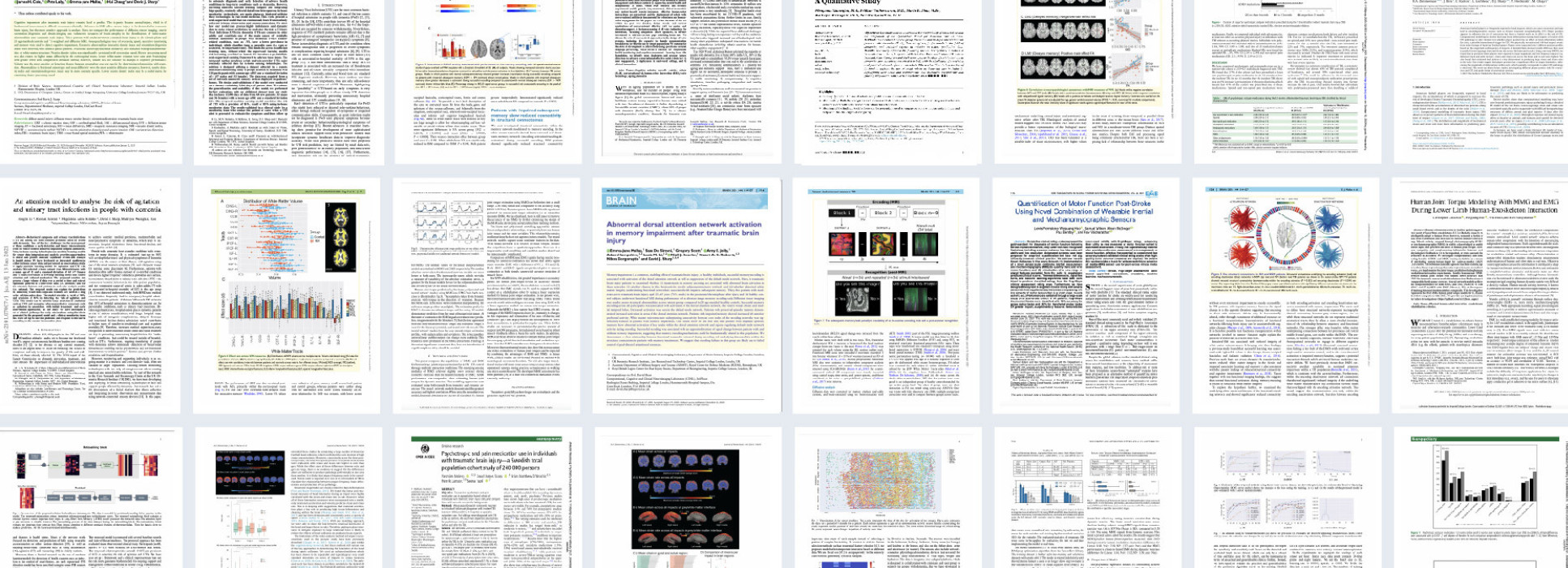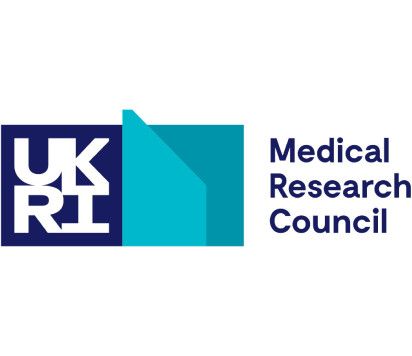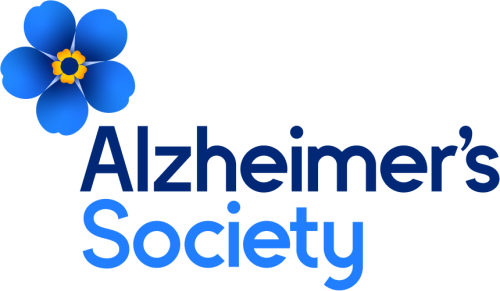
Results
- Showing results for:
- Reset all filters
Search results
-
Journal articleParkinson M, Dani M, Fertleman M, et al., 2023,
Using home monitoring technology to study the effects of traumatic brain Injury in older multimorbid adults: protocol for a feasibility study
, BMJ Open, Vol: 13, ISSN: 2044-6055Introduction:The prevalence of Traumatic Brain Injury (TBI) among older adults is increasing exponentially. The sequelae can be severe in older adults and interacts with age-related conditions such a multimorbidity. Despite this, TBI research in older adults, is sparse. Minder, an in-home monitoring system using developed by the UK DRI Centre for Care Research and Technology, uses infra-red sensors and a bed mat to passively collect sleep and activity data. Similar systems have been used to monitor the health of older adults living with dementia. We will assess the feasibility of using this system to study changes in the health status of older adults in the early period post TBI.Methods and analysis:The study will recruit 15 inpatients (>60 years) with a moderate-severe TBI, who will have their daily activity and sleep patterns monitored using passive and wearable sensors over 6 months. Participants will report on their health during weekly calls, which will be used to validate sensor data. Physical, functional, and cognitive assessments will be conducted across the duration of the study. Activity levels and sleep patterns derived from sensor data will be calculated and visualised using activity maps. Within participant analysis will be performed to determine if participants are deviating from their own routines. We will apply machine learning approaches to activity and sleep data to assess whether these changes in these data can predict clinical events. Qualitative analysis of interviews conducted with participants, carers, and clinical staff will assess acceptability and utility of the system.Ethics and dissemination:Ethical approval for this study has been granted by the London - Camberwell St Giles Research Ethics Committee (REC number: 17/LO/2066). Results will be submitted for publication in peer review journals, presented at conferences and inform the design of a larger trial assessing recovery after TBI.
-
Journal articleSu T, Calvo RA, Jouaiti M, et al., 2023,
Assessing a sleep interviewing chatbot to improve subjective and objective sleep: protocol for an observational feasibility study
, JMIR Research Protocols, Vol: 12, Pages: 1-10, ISSN: 1929-0748BACKGROUND: Sleep disorders are common among the aging population and people with neurodegenerative diseases. Sleep disorders have a strong bidirectional relationship with neurodegenerative diseases, where they accelerate and worsen one another. Although one-to-one individual cognitive behavioral interventions (conducted in-person or on the internet) have shown promise for significant improvements in sleep efficiency among adults, many may experience difficulties accessing interventions with sleep specialists, psychiatrists, or psychologists. Therefore, delivering sleep intervention through an automated chatbot platform may be an effective strategy to increase the accessibility and reach of sleep disorder intervention among the aging population and people with neurodegenerative diseases. OBJECTIVE: This work aims to (1) determine the feasibility and usability of an automated chatbot (named MotivSleep) that conducts sleep interviews to encourage the aging population to report behaviors that may affect their sleep, followed by providing personalized recommendations for better sleep based on participants' self-reported behaviors; (2) assess the self-reported sleep assessment changes before, during, and after using our automated sleep disturbance intervention chatbot; (3) assess the changes in objective sleep assessment recorded by a sleep tracking device before, during, and after using the automated chatbot MotivSleep. METHODS: We will recruit 30 older adult participants from West London for this pilot study. Each participant will have a sleep analyzer installed under their mattress. This contactless sleep monitoring device passively records movements, heart rate, and breathing rate while participants are in bed. In addition, each participant will use our proposed chatbot MotivSleep, accessible on WhatsApp, to describe their sleep and behaviors related to their sleep and receive personalized recommendations for better sleep tailored to their specific reasons for disrup
-
Journal articleDel Giovane M, Trender WR, Bălăeţ M, et al., 2023,
Computerised cognitive assessment in patients with traumatic brain injury: an observational study of feasibility and sensitivity relative to established clinical scales
, EClinicalMedicine, Vol: 59, ISSN: 2589-5370Background:Online technology could potentially revolutionise how patients are cognitively assessed and monitored. However, it remains unclear whether assessments conducted remotely can match established pen-and-paper neuropsychological tests in terms of sensitivity and specificity.Methods:This observational study aimed to optimise an online cognitive assessment for use in traumatic brain injury (TBI) clinics. The tertiary referral clinic in which this tool has been clinically implemented typically sees patients a minimum of 6 months post-injury in the chronic phase. Between March and August 2019, we conducted a cross-group, cross-device and factor analyses at the St. Mary’s Hospital TBI clinic and major trauma wards at Imperial College NHS trust and St. George’s Hospital in London (UK), to identify a battery of tasks that assess aspects of cognition affected by TBI. Between September 2019 and February 2020, we evaluated the online battery against standard face-to-face neuropsychological tests at the Imperial College London research centre. Canonical Correlation Analysis (CCA) determined the shared variance between the online battery and standard neuropsychological tests. Finally, between October 2020 and December 2021, the tests were integrated into a framework that automatically generates a results report where patients’ performance is compared to a large normative dataset. We piloted this as a practical tool to be used under supervised and unsupervised conditions at the St. Mary’s Hospital TBI clinic in London (UK).Findings:The online assessment discriminated processing-speed, visual-attention, working-memory, and executive-function deficits in TBI. CCA identified two significant modes indicating shared variance with standard neuropsychological tests (r = 0.86, p < 0.001 and r = 0.81, p = 0.02). Sensitivity to cognitive deficits after TBI was evident in the TBI clinic setting under supervised and unsupervised conditions (F (15,555) = 3.9
-
Journal articleKirby P, Lai H, Horrocks S, et al., 2023,
Patient and public involvement in technology-related dementia research: a scoping review (Preprint)
, JMIR Aging, Vol: 7, ISSN: 2561-7605Background:Technology-related research for people with dementia and their carers often aims to enable people to remain living at home for longer and to prevent unnecessary hospital admissions. To develop research that is person-centred, effective and ethical, patient and public involvement (PPI) is necessary, though may be perceived as more difficult with this cohort. With recent and rapid expansions in health and care related technology, this review explores how, and with what impact, collaborations between researchers and stakeholders such as people with dementia have taken place.Objective:To describe approaches to PPI used to date in technology-related dementia research, along with the barriers and facilitators and impact of PPI in this area.Methods:A scoping review of literature relating to dementia, technology and patient and public involvement was conducted using Medline, PsycINFO, EMBASE and CINAHL. Papers were screened for inclusion by two authors. Data was then extracted using a pre-designed data extraction table by the same two authors; a third author supported resolution of any conflicts at each stage. Barriers and facilitators of undertaking PPI were then examined and themed.Results:Thirty-one papers were included for analysis. The majority (21/31) did not make clear distinctions between activities undertaken as PPI and activities undertaken by research participants, and as such their involvement did not fit easily into the NIHR definition of PPI. Most of this mixed involvement focused on the reviewing or evaluating of technology prototypes. A range of approaches was described, most typically using focus groups or co-design workshops. Nine studies described involvement at multiple stages through the research cycle, sometimes with evidence of sharing of decision-making power. Some studies commented on barriers or facilitators to effective PPI. Challenges identified were often around issues of working with people with significant cognitive impairments, and
-
Journal articleDavid MCB, Kolanko M, Del Giovane M, et al., 2023,
Remote monitoring of physiology in people living with dementia: an observational cohort study
, JMIR Aging, Vol: 6, Pages: 1-14, ISSN: 2561-7605BACKGROUND: Internet of Things (IoT) technology enables physiological measurements to be recorded at home from people living with dementia and monitored remotely. However, measurements from people with dementia in this context have not been previously studied. We report on the distribution of physiological measurements from 82 people with dementia over approximately 2 years. OBJECTIVE: Our objective was to characterize the physiology of people with dementia when measured in the context of their own homes. We also wanted to explore the possible use of an alerts-based system for detecting health deterioration and discuss the potential applications and limitations of this kind of system. METHODS: We performed a longitudinal community-based cohort study of people with dementia using "Minder," our IoT remote monitoring platform. All people with dementia received a blood pressure machine for systolic and diastolic blood pressure, a pulse oximeter measuring oxygen saturation and heart rate, body weight scales, and a thermometer, and were asked to use each device once a day at any time. Timings, distributions, and abnormalities in measurements were examined, including the rate of significant abnormalities ("alerts") defined by various standardized criteria. We used our own study criteria for alerts and compared them with the National Early Warning Score 2 criteria. RESULTS: A total of 82 people with dementia, with a mean age of 80.4 (SD 7.8) years, recorded 147,203 measurements over 958,000 participant-hours. The median percentage of days when any participant took any measurements (ie, any device) was 56.2% (IQR 33.2%-83.7%, range 2.3%-100%). Reassuringly, engagement of people with dementia with the system did not wane with time, reflected in there being no change in the weekly number of measurements with respect to time (1-sample t-test on slopes of linear fit, P=.45). A total of 45% of people with dementia met criteria for hypertension. People with dem
This data is extracted from the Web of Science and reproduced under a licence from Thomson Reuters. You may not copy or re-distribute this data in whole or in part without the written consent of the Science business of Thomson Reuters.
Awards
- Finalist: Best Paper - IEEE Transactions on Mechatronics (awarded June 2021)
- Finalist: IEEE Transactions on Mechatronics; 1 of 5 finalists for Best Paper in Journal
- Winner: UK Institute of Mechanical Engineers (IMECHE) Healthcare Technologies Early Career Award (awarded June 2021): Awarded to Maria Lima (UKDRI CR&T PhD candidate)
- Winner: Sony Start-up Acceleration Program (awarded May 2021): Spinout company Serg Tech awarded (1 of 4 companies in all of Europe) a place in Sony corporation start-up boot camp
- “An Extended Complementary Filter for Full-Body MARG Orientation Estimation” (CR&T authors: S Wilson, R Vaidyanathan)

Established in 2017 by its principal funder the Medical Research Council, in partnership with Alzheimer's Society and Alzheimer’s Research UK, The UK Dementia Research Institute (UK DRI) is the UK’s leading biomedical research institute dedicated to neurodegenerative diseases.


